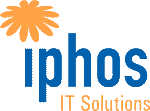What is IT – scalability? – A definition
IT-scalability is the ability of a system to work with a larger amount of work by adding resources to the working system. Seen in an economic context, a scalable business model implies, that a company is able to increase sales with given increased resources.
Any software that may expand past its basic functions should be configured for scalability. Especially, if a business model depends on its growth, it should be made for scalability.
Learn more about IT – scalability:
IT – scaleability has two common usages:
- First, the ability of a computer or product, which also functions well with a larger size in volume. The product can be a hardware or software. The rescaling is usually a larger size or volume to work with. This workload could be users, storage capacity, the maximum number of transaction handled. Basically, anything that pushes the system past its usually capacity.
- Second, IT – scalability is also the ability to actually take full advantage of the rescaled situation.
The principles of scalability:
There are some factors which do affect the overall scalability of software:
- usage: Usage measures the number of users or connections which are possible. There should not be any limits on usage. Increasing it should be very simple as well as making more resources available.
- maximum stored data: The maximum of stored data is relevant for programs featuring a lot of unstructured data like user uploaded content, site reports or some kind of marketing data.
- code: The code should be written so that it can be added to or even modified without refactoring the old code.
Scaling up and scaling down
Scalability can go upward and downward. It is easier to have scalability upward rather than downward. Scaling downward may mean trying to achieve the same result in a more constrained environment.
Scaling up means growing by using more advantanced or stronger hardware. Disk space or a faster central processing unit could be used to handle the higher workload. But the main problem with scaling up is that there is only limited space to grow. Hardware becomes more expensive when it is higher advanced. Implementing new hardware takes time. If you want to grow your software grow quickly without any notice, these limitations show that scaling up is not the best solution.
Scaling down can also be be called scaling out or horizontal scaling. These solution is more often used for business purposes. If you decide to scale out, software is growing by using more, but not more advanced hardware. The increased workload is spreaded over the new added infrastructure. Costs for scaling down are lower because the extra hardware or software can be the same as the one, which is currently used. In addition, scaling happens faster, since nothing has to be imported or rebuild. Otherwise, horizontally – scaled software is limited by the speed with wich the server can communicate.
Most users don’t even realize a difference between scaling up and scaling down.
The benefits of IT – scaleability – the long and short term benefits
IT – scalability has both long and short term benefits. It works as a guideline and lets a company only purchase what the business immediately needs and not even feature that might be useful someday. A dashboard is useful to collect results of their primary data sources and existing enterprise software. When the company has grown and does use more analytic programs, the data streams can easily be added into the dashboard, instead of forcing the company to choose between multiple visualization programs or even build a whole new system. Choosing scalable solutions does protect the initial technology investment. A side benefit is, that staff will not need much training or persuasion to adopt that existing upgraded system, since they are already familiar with the interface.
Types of IT – scalability
There are four different types of IT – scalability
- land scalability: constant system behavior over more extensive load ranges.
- spatial scalability: a system or application when storage requirements don’t increase unacceptably high as the number of items to be managed grows.
- time – spatial scalability: a system has temporal – scalability when increasing the number of objects that a policy includes does not really affect its performance.
- structural scalability: A system with structural scalability is a system whose implementation does not significantly hamper increasing the number of objects within a self-defined scope.
Contact us
Contact us if you are interested in our solutions. One of our employees will evaluate your ideas and provide first consulting. After that, we will send you an offer that is optimized for your specific needs.
Phone: +43 1 8698400
Email: office@iphos.com
Company
We are a strong international company – to bring the best IT solutions to you. We provide an outstanding full service in the areas of IT, ITSM, software development and web development for our customers.
IT-Infrastructure
As full service provider and sustainable company, we provide top solutions for maintenance, consulting, networks, Exchange, Linux- & Windows servers, and more.
Software development
State-of-the-Art software development from Vienna: we work on your ideal individual solutions in software, mobile apps, interface- and database development.
Web development
We rethought web development: we offer intranets & extranets, websites, e-commerce platforms, online calculators, newsletter systems and provide classical services like SEO, SEM, and more.

![]() Iphos IT Solutions GmbH
Iphos IT Solutions GmbH
![]() Arndtstrasse 89 / Top 22 1120 Vienna, Austria
Arndtstrasse 89 / Top 22 1120 Vienna, Austria